
software resources for science and technology education



Junior Simulation Insight -
Body Temperature Balance
A greatly simplified model to describe some of the factors, which govern the human body's ability to maintain a stable temperature.
A greatly simplified model to describe some of the factors, which govern the human body's ability to maintain a stable temperature.
Electromagnetism
The effect of an electric current to create magnetism. Current and voltage in transformers.
The effect of an electric current to create magnetism. Current and voltage in transformers.
Melting Ice
The melting of ice into water: two scenarios.
The melting of ice into water: two scenarios.
Growing Plants
The growth of a plant in terms of the necessary environmental conditions and the interdependency of the plant and its root structure.
The growth of a plant in terms of the necessary environmental conditions and the interdependency of the plant and its root structure.
Water Cycle
Factors affecting precipitation and evaporation in the cycle of water transferring from the Earth into the atmosphere, forming clouds and returning as rain.
Factors affecting precipitation and evaporation in the cycle of water transferring from the Earth into the atmosphere, forming clouds and returning as rain.
Forces in Action
The force of gravity on a range of different masses where the strength of gravity can be adjusted to simulate the effect of moving to the Moon or to another planet.
The force of gravity on a range of different masses where the strength of gravity can be adjusted to simulate the effect of moving to the Moon or to another planet.
Pulling a Sledge
Model of the motion of a sledge to relate the velocity to the number of passengers and the force used to pull the sledge.
Model of the motion of a sledge to relate the velocity to the number of passengers and the force used to pull the sledge.
Simple Electric Circuits
Models examining the relationship between voltage, current and resistance.
Models examining the relationship between voltage, current and resistance.
Keeping Warm
The heat loss from the human body, taking into account temperature of surroundings and insulation properties of clothing
The heat loss from the human body, taking into account temperature of surroundings and insulation properties of clothing
Buying Energy
The amount and cost of electrical energy supplied to a range of electrical appliances in a typical kitchen.
The amount and cost of electrical energy supplied to a range of electrical appliances in a typical kitchen.
Kite
Model measuring the effect of changes in windspeed on the height that a kite will reach.
Model measuring the effect of changes in windspeed on the height that a kite will reach.
Orbits in Space
The motion of a satellite in orbit around the Moon, the Earth & the other planets.
The motion of a satellite in orbit around the Moon, the Earth & the other planets.
Keeping Healthy
The decline of a population as affected by the percentages of people who smoke, eat excessively or take regular exercise.
The decline of a population as affected by the percentages of people who smoke, eat excessively or take regular exercise.
Pinocchio
A model which predicts how long Pinocchio's nose will grow according to how many lies he tells per day.
A model which predicts how long Pinocchio's nose will grow according to how many lies he tells per day.
Predators and Prey
Various models observing the cycles of two populations (predator and prey) noting how they affect the size of each group.
Various models observing the cycles of two populations (predator and prey) noting how they affect the size of each group.
Warm Mouse
The heat loss from the mouse, taking into account temperature of surroundings and insulation properties of clothing.
The heat loss from the mouse, taking into account temperature of surroundings and insulation properties of clothing.
Warm Cow
The heat loss from the cow, taking into account temperature of surroundings and insulation properties of clothing.
The heat loss from the cow, taking into account temperature of surroundings and insulation properties of clothing.
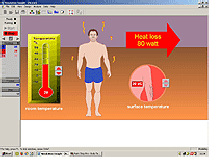
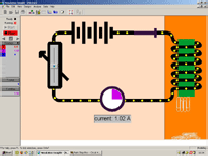



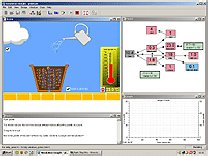









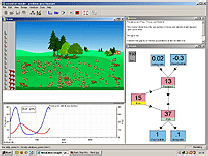



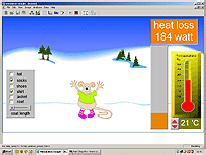



© 2021 Insight Resources